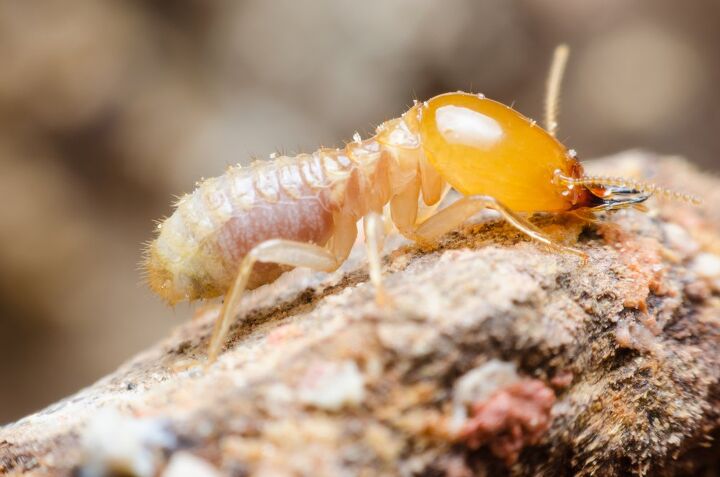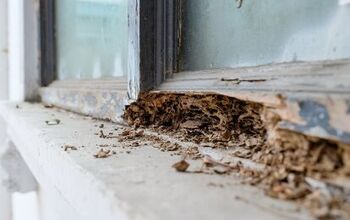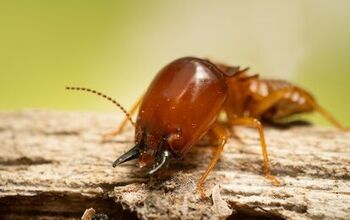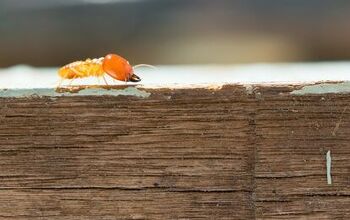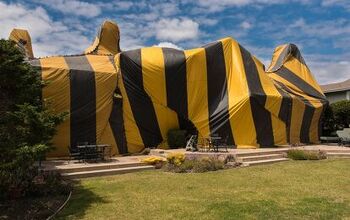Is Drilling Necessary For Termite Treatment? (Find Out Now!)

When you discover that you have termites, you naturally are eager to get rid of them. There are several ways to get rid of termites, including drilling, but you want to ensure that you choose the best way. How do you decide when drilling is necessary for termite treatment?
When treating a termite infestation, the ideal recommendation is to directly treat the nesting area. Therefore, if you cannot directly reach the infestation, you may need to create a way for better access. If you need a better way to access the infestation, then drilling is necessary for termite treatment.
Do You Need Pest Control Services?
Get free, zero-commitment quotes from pro contractors near you.

What Is Termite Drilling?
Termite drilling involves drilling directly into the foundation of the termite-infested building. This process allows the termiticide to reach the area of the infestation directly.
Is Drilling Necessary for Termite Treatment?
Subterranean termites are the most common type of termite and cause billions of dollars in damage each year. These termites can eat books, paper products, cellulose-based products, and other plant-based goods. When trying to get rid of these termites, the recommendation is that you directly treat the infestation.
It’s necessary to drill holes in the suspected nesting area in order to gain access to the infestation. Once you have drilled the holes, use a non-repellent termite product to treat the nest.
Non-repellants typically come in three formulations, concentrated liquids, aerosol sprays, and foams. The location of the infestation and your personal preference will determine the product you choose.
How To Use Drilling To Treat Termites
If you determine that drilling is necessary for termite treatment you need to locate the infestation. Once you locate your termite infestation, you need to drill into the drywall or infested wood then apply the product. Drill holes into the drywall about 18 inches above the floor and between each stud of the infested area.
If you are drilling directly into the infested wood, drill small holes every 3 to 4 inches apart. Do this until you find a spot that doesn’t meet the resistance of the drill bit. This will indicate that you have found the termite gallery, and you should apply the product here.
Other Types of Termite Treatments
In addition to drilling, there are other termite treatments to rid your property of a termite infestation. Some common types are rodding, chemical treatment, bait treatment, tenting, fumigation, and heat treatment.
Rodding Termite Treatment
Rodding occurs in conjunction with a trench dug into the soil around your home to apply the termite product. After digging the trench, a rod goes in every 12 inches to make a hole for the termiticide. The product flows into the rod holes to provide additional termite protection to the property.
Chemical Termite Treatment
Chemical termite treatments are applied in the soil to the exterior of the home. This treatment works best for subterranean or drywood termites that haven’t infested the entire home yet. You can use this treatment with rodding or drilling where the chemicals go into the holes.
Bait Termite Treatment
Bait termite treatment also works best for subterranean and drywood termites. Holes are dug or drilled around the home, and then exterminators install bait stations. Termites feed on the poison and carry it back to their colonies, ultimately destroying them.
This treatment typically costs $8 to $12 per linear foot. The bait treatment is less precise than chemical treatment and often requires more visits.
Tenting Termite Treatment
If you have a large infestation of termites, tenting may be required. Tenting treats the entire home and covers a larger area than chemical or bait treatments. Tenting works best when termites are already in the house but not effective if there are underground infestations.
The tenting termite treatment involves draping the entire structure of the house with a tent. Termite chemicals then go into the enclosed environment. This treatment averages $1,200 to $2,500 or between $5 and $20 per linear foot.
Fumigation Termite Treatment
Fumigation termite treatment is similar to tenting, but it is more aggressive as it involves gas. A tent covers the entire house, and then professionals pump gas inside, killing any termites in the house. This treatment takes several hours to complete and residents, pets, and plants should be out of the house 3 to 5 days.
Fumigation can range from $10 to $20 per linear foot.
Heat Termite Treatment
The final option for termite treatments is heat tenting. This procedure is a chemical-free and organic treatment. The tent covers your entire home or can be localized to a specific room or area of the house.
Professionals prep the house or area for treatment by draping it in a tent and forcing hot air into the area. the overall temperature should reach 150 degrees Fahrenheit. Once the treatment eliminates the infestation, the tent is removed, and the homeowners can return once the temperature returns to normal.
This treatment usually ranges from $800 to $2,500, or $10 per linear foot.
Do You Need Pest Control Services?
Get free, zero-commitment quotes from pro contractors near you.

Related Questions
What’s the average cost to treat a home for termites?
A number of factors will influence the cost to treat your home for termites. These include the size of the colony, the type of termite, the severity of the infestation, and the location of the infestation. Some termite control professionals will also take into account the size of the structure that requires treatment. The cost of termite treatment ranges from $200 to $900, but the average price is about $560. This will break down to $3 to $16 per linear foot of your home. The type of termite treatment will also affect the cost.
What’s the difference between subterranean termites and drywood termites?
There are two common termites, drywood termites and subterranean termites. The difference between the two termites is that drywood termites infest dry wood and don’t require contact with soil. Subterranean termites, however, need contact with soil and water in order to survive. In addition to the difference in how the two termites survive, there are also differences between their size and common signs of the termite. Drywood termites are brown or white and larger than yellowish-brown subterranean termites. You’ll often discover drywood termites because they push frass out, which can appear in piles that look like sawdust. You can spot subterranean termites when mud tubes appear. This is a mixture of soil, wood, saliva, and feces found along the foundation of the property.

Stacy Randall is a wife, mother, and freelance writer from NOLA that has always had a love for DIY projects, home organization, and making spaces beautiful. Together with her husband, she has been spending the last several years lovingly renovating her grandparent's former home, making it their own and learning a lot about life along the way.
More by Stacy Randall



